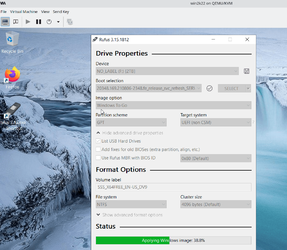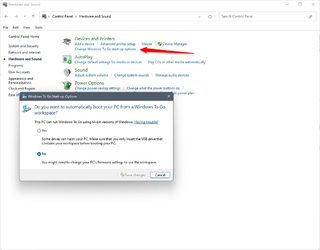- Local time
- 10:23 AM
- Posts
- 5,166
- Location
- Hafnarfjörður IS
- OS
- Windows XP,10,11 Linux (Fedora 42&43 pre-release,Arch Linux)
Hi folks --
For testing all these builds etc - if you have any spare old USB3 HDD's / SSD's etc - I suggest you use latest version of Rufus to create WindowstoGo systems of W11 builds etc -- great way of testing on REAL hardware without hosing up your current system.
Rufus does it really simply for new installs -- even from WITHIN VM's == you just need RUFUS, the iso of the windows build you want to install and a USB device
Then simply from within Rufus select advanced - show USB disks, the select iso and "Windows To Go" for type of Windows install

When it finishes just boot the device and it will finish setting up windows -- great testing tool if you have some spare drives -- easy to move to different machines as well !!!. You can re-size partitions etc afterwards if you only want to use small partitions.
Cheers
jimbo
For testing all these builds etc - if you have any spare old USB3 HDD's / SSD's etc - I suggest you use latest version of Rufus to create WindowstoGo systems of W11 builds etc -- great way of testing on REAL hardware without hosing up your current system.
Rufus does it really simply for new installs -- even from WITHIN VM's == you just need RUFUS, the iso of the windows build you want to install and a USB device
Then simply from within Rufus select advanced - show USB disks, the select iso and "Windows To Go" for type of Windows install

When it finishes just boot the device and it will finish setting up windows -- great testing tool if you have some spare drives -- easy to move to different machines as well !!!. You can re-size partitions etc afterwards if you only want to use small partitions.
Cheers
jimbo
My Computer
System One
-
- OS
- Windows XP,10,11 Linux (Fedora 42&43 pre-release,Arch Linux)
- Computer type
- PC/Desktop
- CPU
- 2 X Intel i7
- Screen Resolution
- 4KUHD X 2









